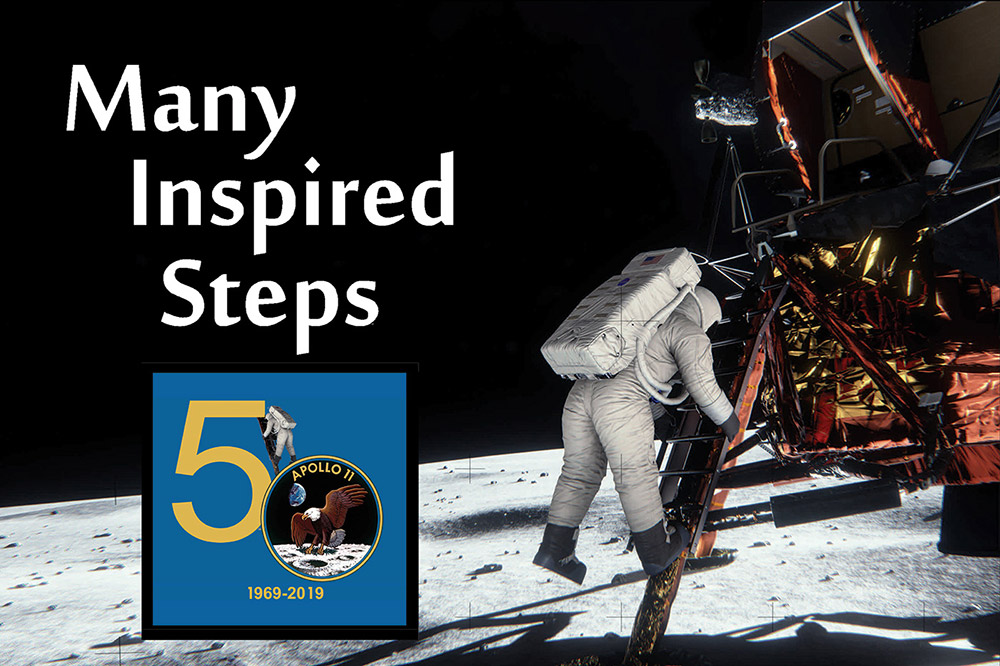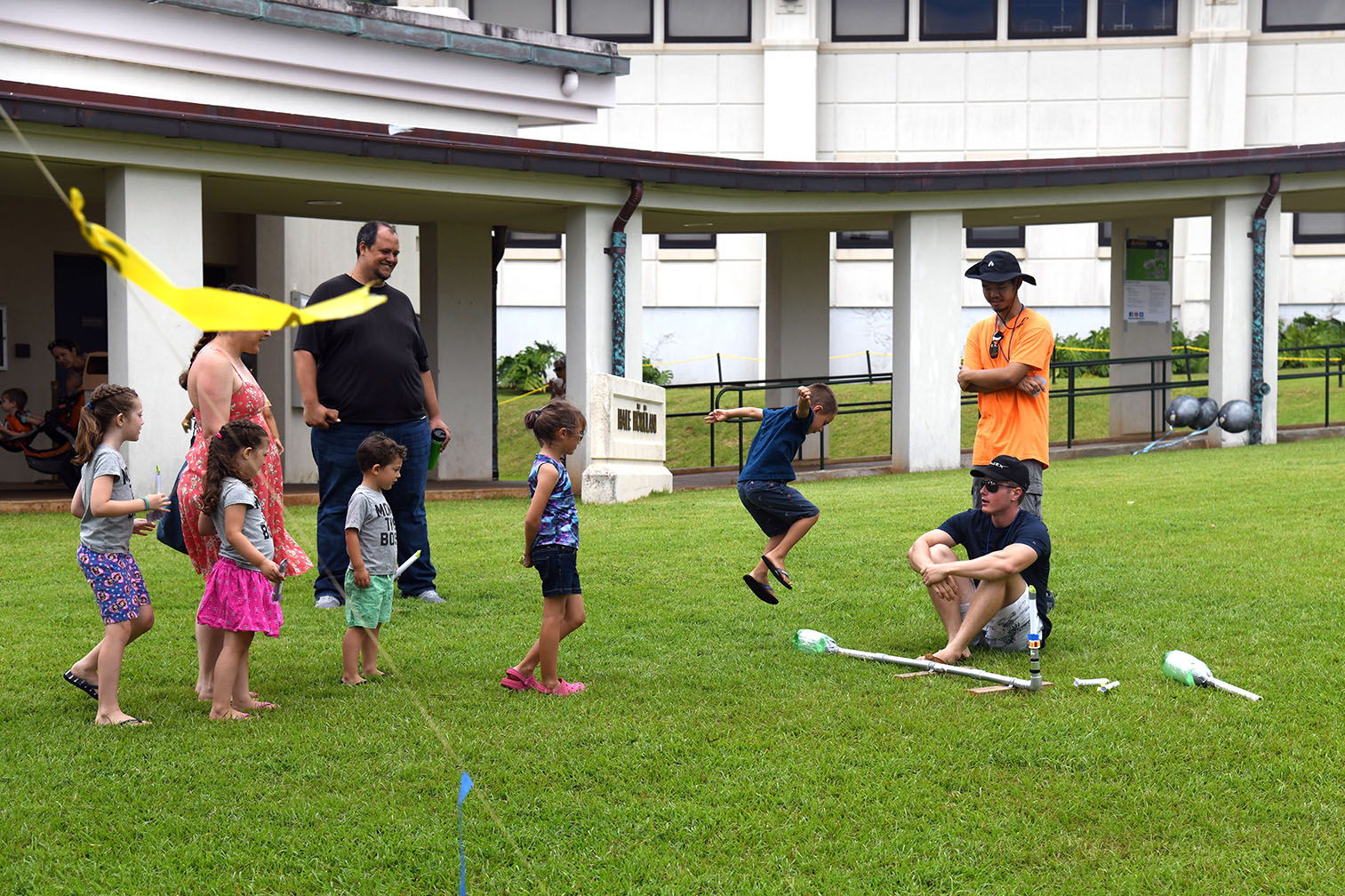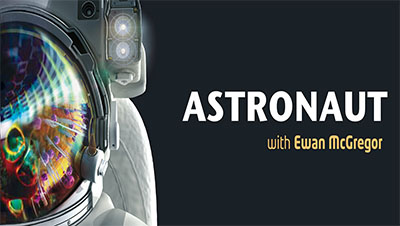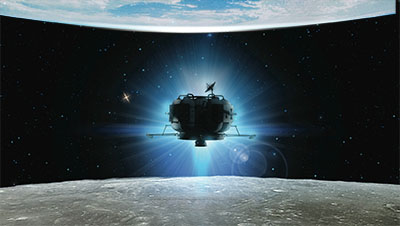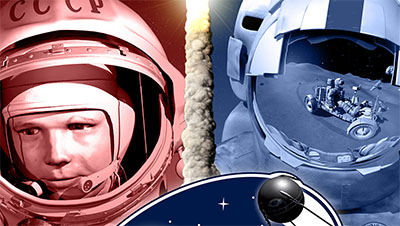Every adventure begins with one small step.
On July 20th, 2019 Windward Community College’s Center for Aerospace Education presented the Apollo11 Family Spacefest to celebrate the 50th anniversary of Apollo 11 and man’s first landing on the moon. Some 3,000 community members attended this all-day event.
Spacefest served as a reminder to Hawaii’s community of the intimate connection between our rich heritage of Polynesian seafarers and today’s bold spacefarers—which is appropriately captured in the word astronaut—meaning star-sailor. The activities at Spacefest were selected to encourage Hawaii’s students to explore STEM-based studies and consider careers in aerospace sciences and technology. Spacefest’s ultimate goal was to ignite the imagination of our youth and inspire them to learn, explore and take risks to fulfill their dreams—to encourage them to follow in the footsteps of Apollo 11’s courageous astronauts. Spacefest’s theme embodied this aspiration: Every adventure begins with one small step.
Activities
Spacefest provided a variety of family activities. The on display at the exhibit in Gallery ‘Iolani were Apollo 11 and 17 moon rocks, a "Many Inspired Steps" panels exhibit, a diorama entitled "Neil Armstrong's One Small Step" and many more models, historical photos and documents, and artifacts.
Aerospace Exhibitors
Various aerospace organizations from around the islands set up tables to inform the public about their programs and opportunities for careers in aerospace science and technology. These include the Hawaii Space Grant Consortium (HSGC), Hawaii Space Flight Lab (HSFL), Pearl Harbor Aviation Museum (PHAM), Pacific International Space Center for Exploration Systems (PISCES), and USS Hornet Museum (loaned USS Hornet artifacts placed on display in Gallery 'Iolani).

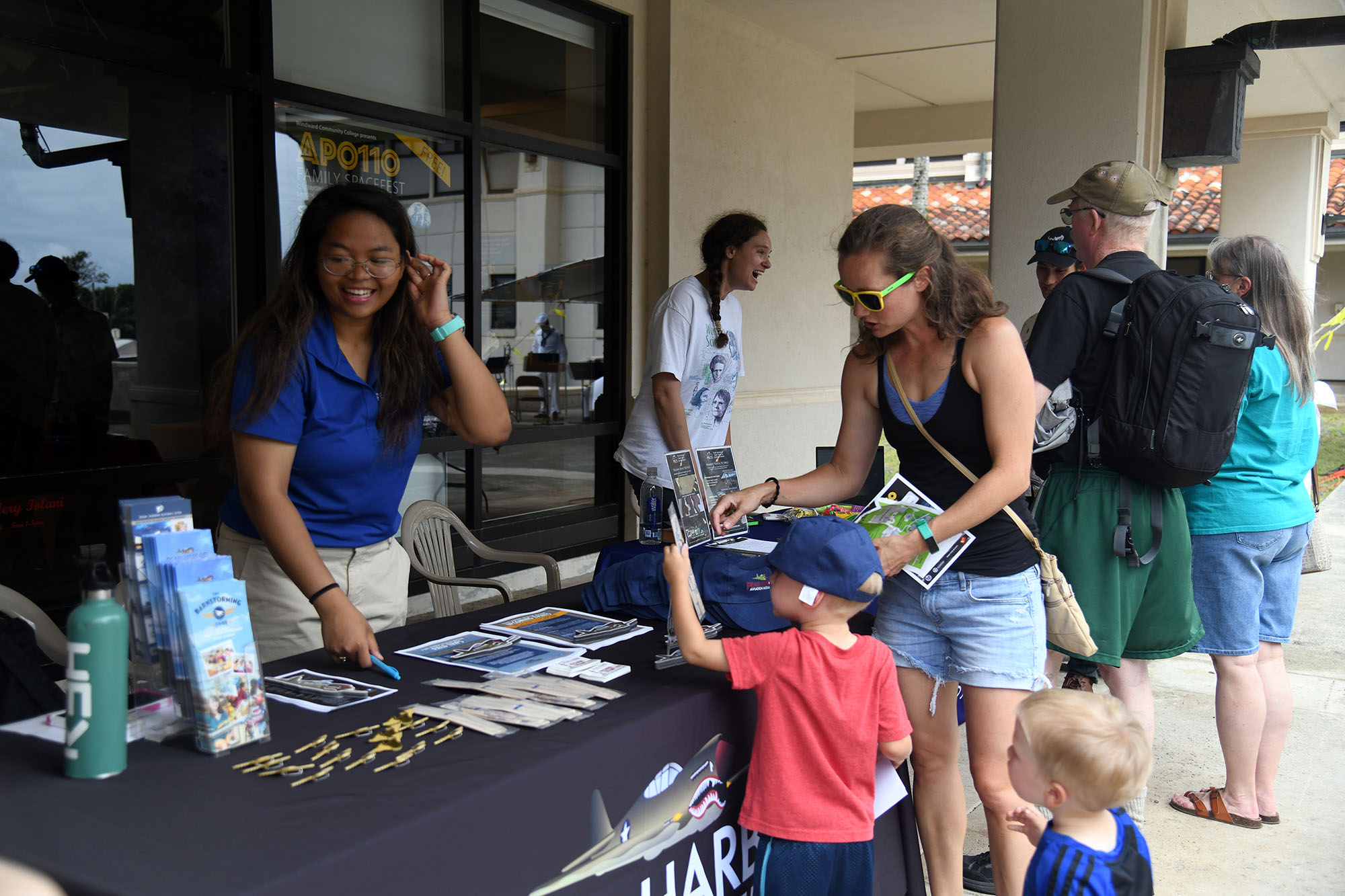
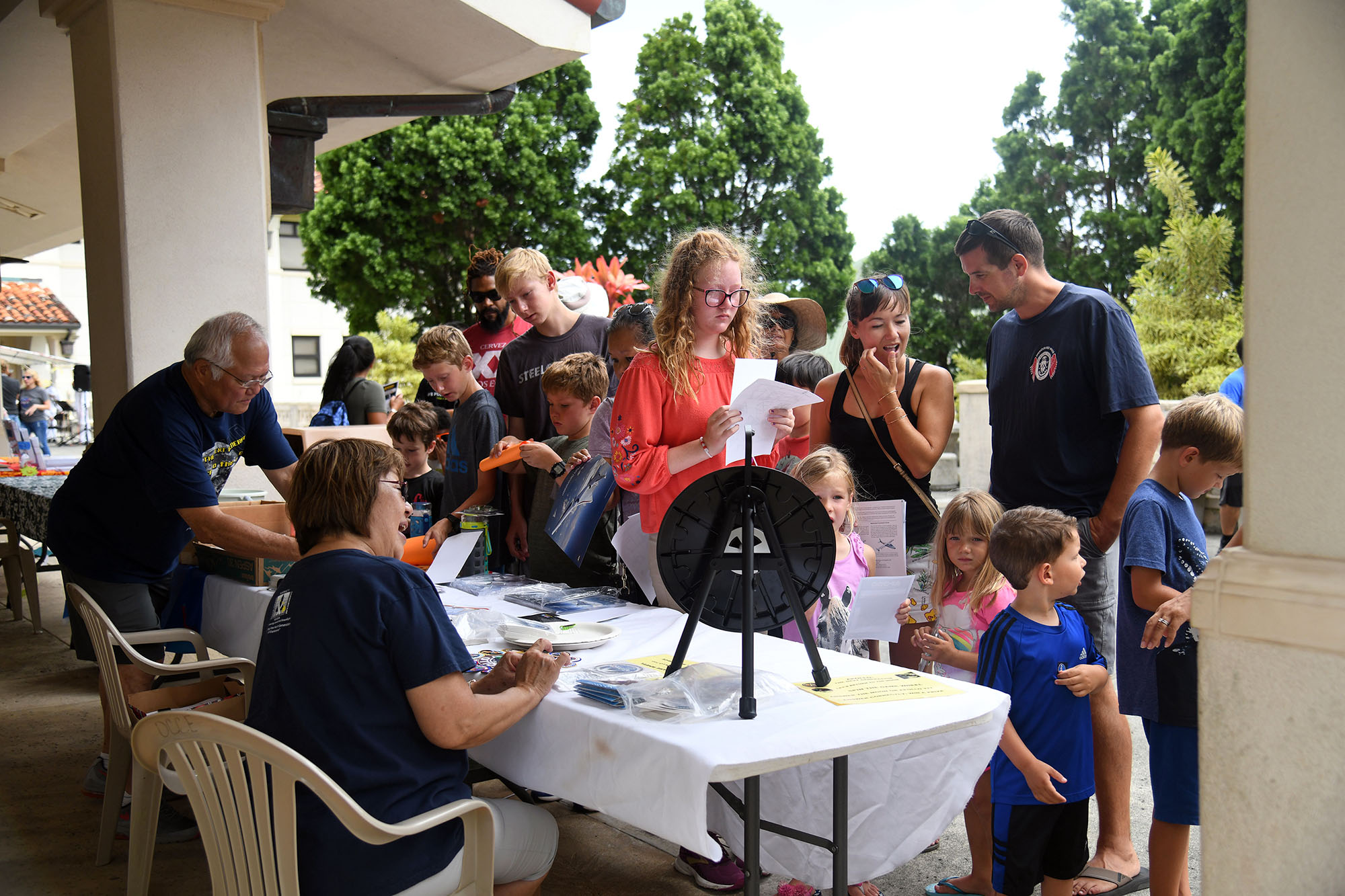
Aerospace Exploration Lab
The Aerospace Exploration Lab serves as a “hands-on” science exploratorium assisting the community
in discovering physical science principles through low-tech activities that can be readily replicated at
home and in schools. Also on display are museum-quality, life-size and scaled aerospace models as well
as an aerospace resource library.
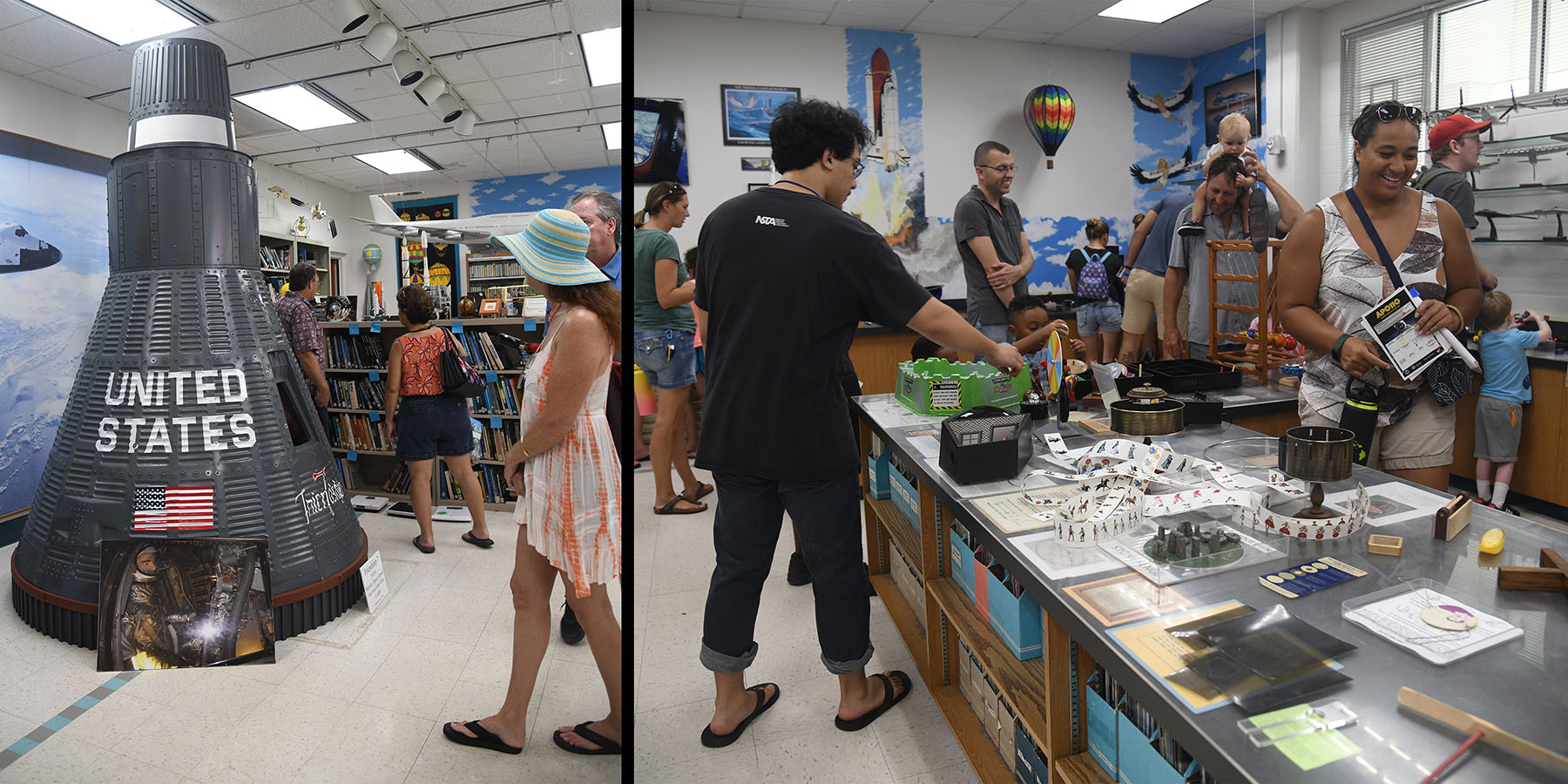
Apollo Moon Walk
Set-Up:
A 4-inch diameter Moon globe is positioned 41.5 feet from a 16-inch diameter Earth. A figure-8 flight path is painted on the ground around these globes (see top two photos). At the foot of the Moon globe is a container with small basalt river pebbles, a ¼-scale Apollo astronaut and an American flag (see middle two photos).
Ancillary Activities:
- Apollo & Artemis hands-on activity (see bottom left photo) and directions below. Learning about Moon's 1/6th gravity.
- Apollo First Words Wall activity (see bottom right photo). Posting the words you'd say when you first step on the Moon.
- 6-foot inflatable Moon globe (see top right photo): Q&A about the Moon led by Peter Mouginis-Mark, Director of the Pacific Regional Planetary Center and Researcher at Hawaii Institute of Geophysics and Planetology.
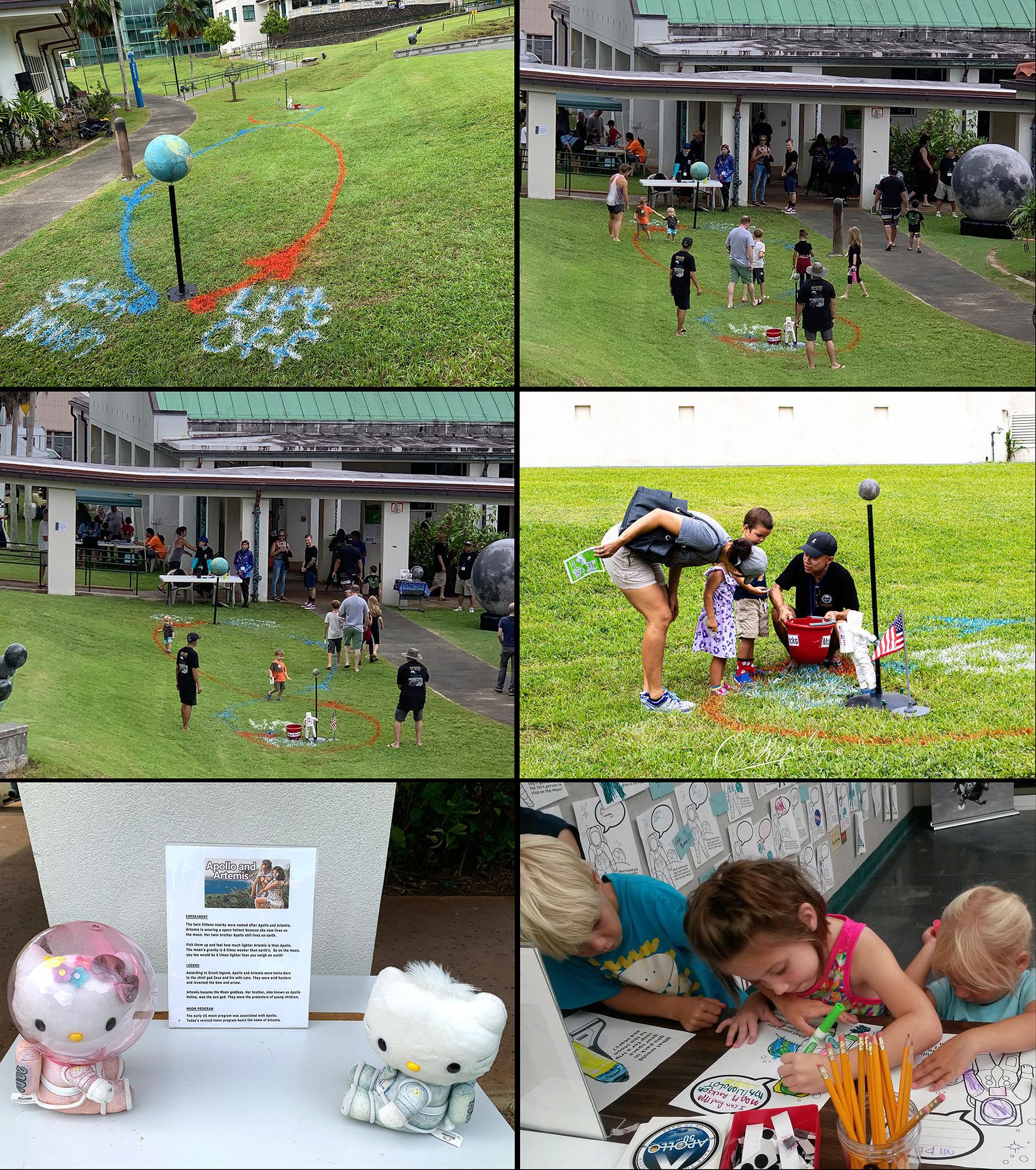
Apollo Moon Walk Directions
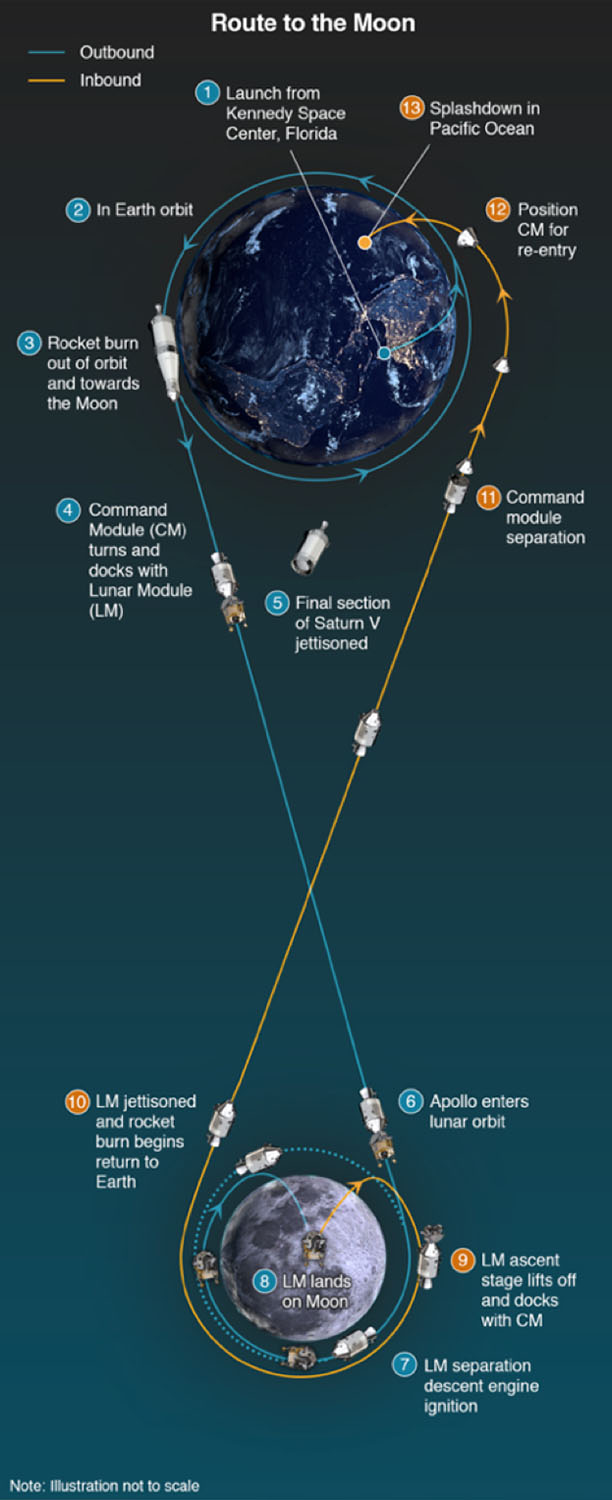
Volunteer 1 at the earth:
Provides the following scenario to each participant.
"You've been selected for the Apollo 50 mission to the Moon. This is your mission patch [Apollo 50 decal]. Lift off from earth. Fly to the moon along the blue orbital path. Collect a moon rock and return to earth."
Volunteer 2 at the moon:
Asks the participant: "You've just landed on the Moon! What are your first words?"
Have participant choose a moon rock from the red bucket.
Tell participant: "Fly back to earth along the orange orbital path. Splash down and get your Spacefest passport stamped."
Volunteer 1 at the earth:
Remind participant to stamp the Spacefest passport. Direct them to the Apollo Wall room where they can write their first words on the Moon and post them on the age Velcro wall.
Q&A about the Moon with Peter Mouginis-Mark
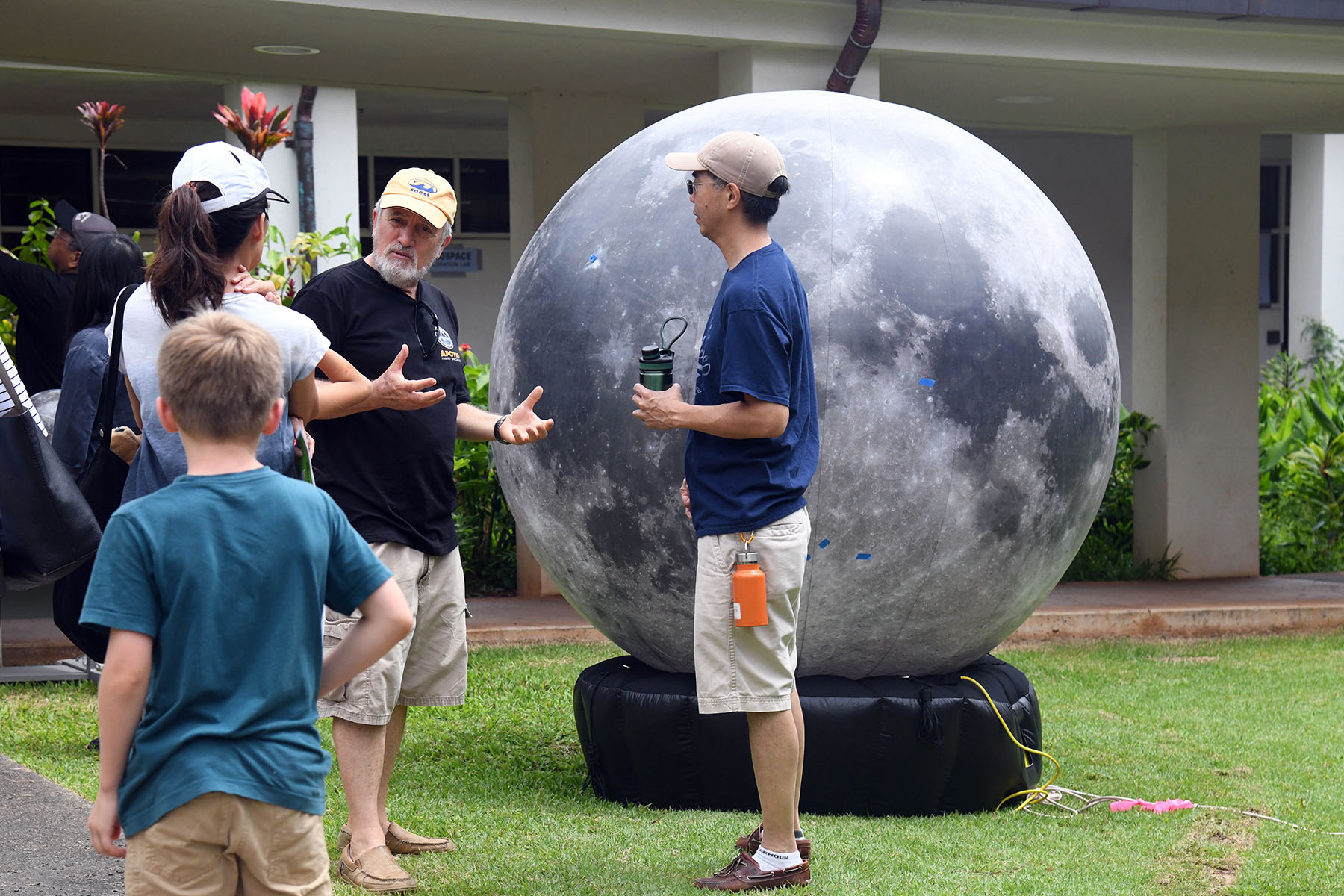
Apollo and Artemis Hands-on Activity (see bottom left photo above)
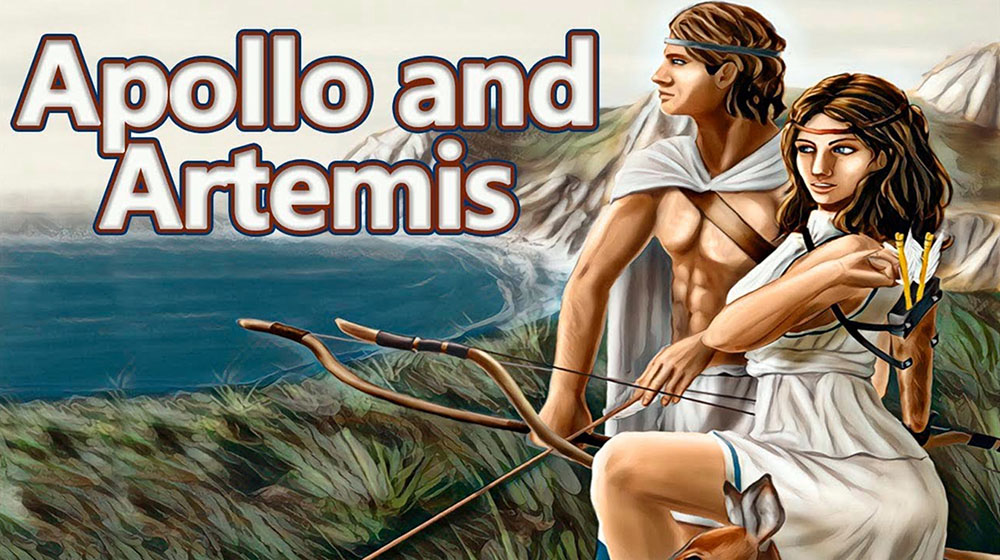
EXPERIMENT
The twin kittens nearby were named after Apollo and Artemis. Artemis is wearing a space helmet because she now lives on the moon. Her twin brother Apollo still lives on earth.
Pick them up and feel how much lighter Artemis is than Apollo. The moon's gravity is 6 times weaker than earth's. So on the moon, you too would be 6 times lighter than you weigh on earth!
LEGEND
According to Greek legend, Apollo and Artemis were twins born to the chief god Zeus and his wife Leto. They were avid hunters and invented the bow and arrow. Artemis became the Moon goddess. Her brother, also known as Apollo Helios, was the sun god. They were the protectors of young children.
MOON PROGRAM
The early US moon program was associated with Apollo. Today's revived moon program bears the name of Artemis.
Apollo Theater
Setup to resemble a late 1960's living room with old rabbit-ears TV, the Apollo Theater played a continuous running 20-minute video of the Apollo 11 mission—from JFK's inspiring speech to the tense moments before the Eagle landed at Tranquility Base ... and onto Neil Armstrong's famous "One Small Step"and Buzz Aldrin's "Magnificent Desolation"... and followed by setting up of the solar wind experiment, planting of the American flag and finally lift-off back into lunar orbit, splashdown in the Pacific Ocean and recovery by the USS Hornet.
Face Painting
Space-theme face painting was a popular and colorful way of adding your own personal statement aboutSpacefest.
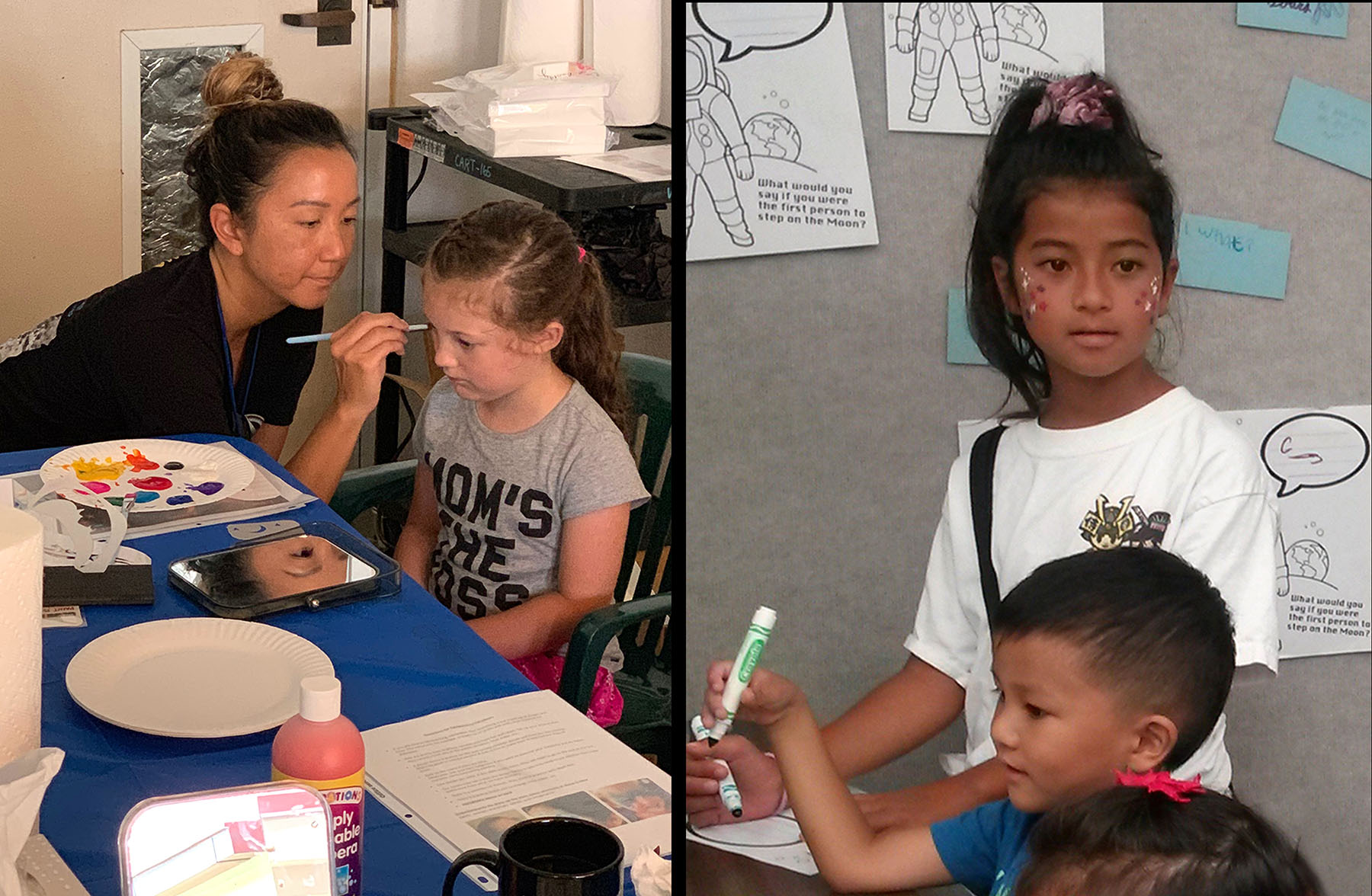
Gallery 'Iolani Exhibit
Gallery 'Iolani presented a Spacefest exhibit which included:
- artifacts from the Hawai'i State Archives: Apollo 11 & 17 moon rocks, Hawai'i State flags flown to the lunar surface, photographs and other items illustrating the close connection between Hawai'i and the Apollo program
- artifacts from the USS Hornet Museum
- museum quality models of the US space program vehicles — from Mercury to Gemini to Apollo to Orion
- Many Inspired Steps multi-poster exhibit which was organized and donated by Thomas A. Lesser and distributed by Audio Visual Imagineering, Inc.
- Royal Guard of the Hawai'i National Guard stood watch over the Hawai'i Moon-flown flags
Guest Speakers
Bruce Blankenfeld
Polynesian Voyaging
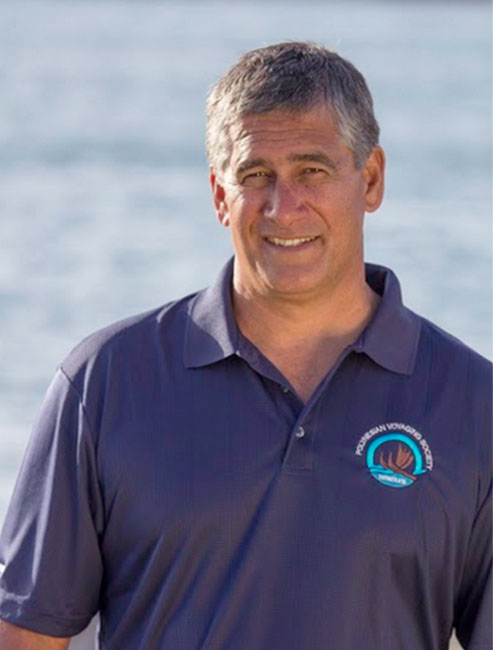
Pwo navigator Bruce Mealoha Blankenfeld became involved with the Polynesian Voyaging Society (PVS) in 1977 by volunteering on Hokule‘a training sails and with construction and repair of the wa‘a kaulua in drydock. Since then, he has voyaged thousands of miles throughout Polynesia, Micronesia, Vancouver, Alaska and Japan. Through extensive training and experience, while sailing more than 100,000 miles, he became a master navigator – using traditional, non-instrument methods. He led Hokule‘a’s recent, extensive renovation, and is currently the Voyaging Director for PVS’s Worldwide Voyage, as well as the Vice Chair of the PVS Board of Directors. He is a popular and inspiring lecturer on Polynesian navigating, voyaging and wayfinding. Mr. Blankenfeld is a fisherman who remains active in the paddling community as a paddler, coach and president of the Board of Directors of Hui Nalu Canoe Club. He is a long-time member and kayaker with the Hawai‘i Canoe & Kayak Team, and works fulltime as a stevedoring contractor for McCabe Hamilton and Renny.
Krissie Kellogg
Space Shuttle

Krissie Kellogg is an Educational Specialist at Windward Community College’s Hōkūlani Imaginarium, where she presents live monthly Stargazing shows at the college’s fulldome planetarium. These shows provide information on current happenings in the nighttime sky and help familiarize the audience with constellation identification. She also assists in the Aerospace Exploration Lab—a hands-on exploratorium operated by the college’s Center for Aerospace Education (CAE). She has developed a special interest in the Space Shuttle program and given numerous lectures on this topic. Recently, she was given a private tour of the Space Shuttle Endeavour, which is on display in the Samuel Oschin Pavilion at the California Science Center in Los Angeles, CA.
Jeff Taylor
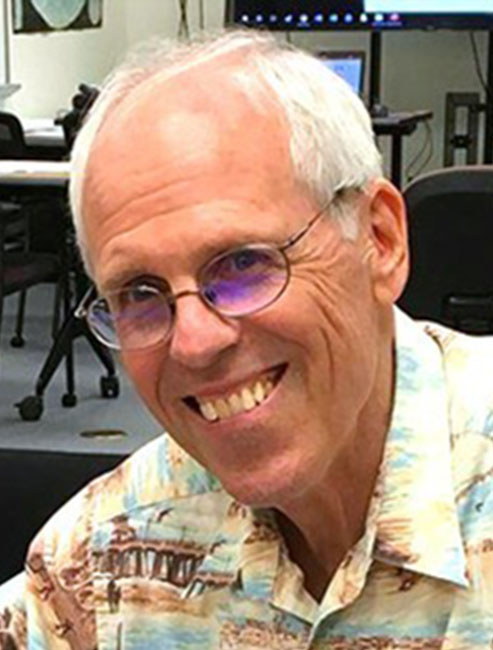
G. Jeffrey Taylor is researcher emeritus with the Hawai'i Institute of Geophysics and Planetology (HIGP) in the School of Ocean and Earth Science and Technology (SOEST) at the University of Hawai'i at Manoa. He serves on the science advisory board for the Blue Origin lunar lander, called Blue Moon. His interests range from laboratory studies of rocks and meteorites to geologic field observations to remote sensing, all combined to understand planetary processes that operate on Earth, Moon, the planets, and asteroids. He is involved in planning future missions to the Moon and Mars, in the use of robotics for field geological studies, remote sensing mapping to understand planetary composition and geologic evolution, and developing methods to prospect for resources on the Moon and Mars. He was named the 2008 recipient of the Carl Sagan Medal for Excellence in Public Communication in Planetary Science.
Imaginarium Shows
The following planetarium shows were offered at the college's Hōkūlani Imaginarium throughout Spacefest.
Passports
Participants were issued Spacefest Passports to stamp at each activity they visited. Upon completion, the Passport holder could select from a variety of prizes, such as embroidered space patches, decals and posters.

Photo Booth
Space-theme backdrops and props made for creative Spacefest Photo Booth poses, which could be posted at #spacefestwcc.

Music
The Harbor Brass performed The Star Spangled Banner and Hawai'i Pono'i at the Opening Ceremonies and held an open-air concert afterwards.
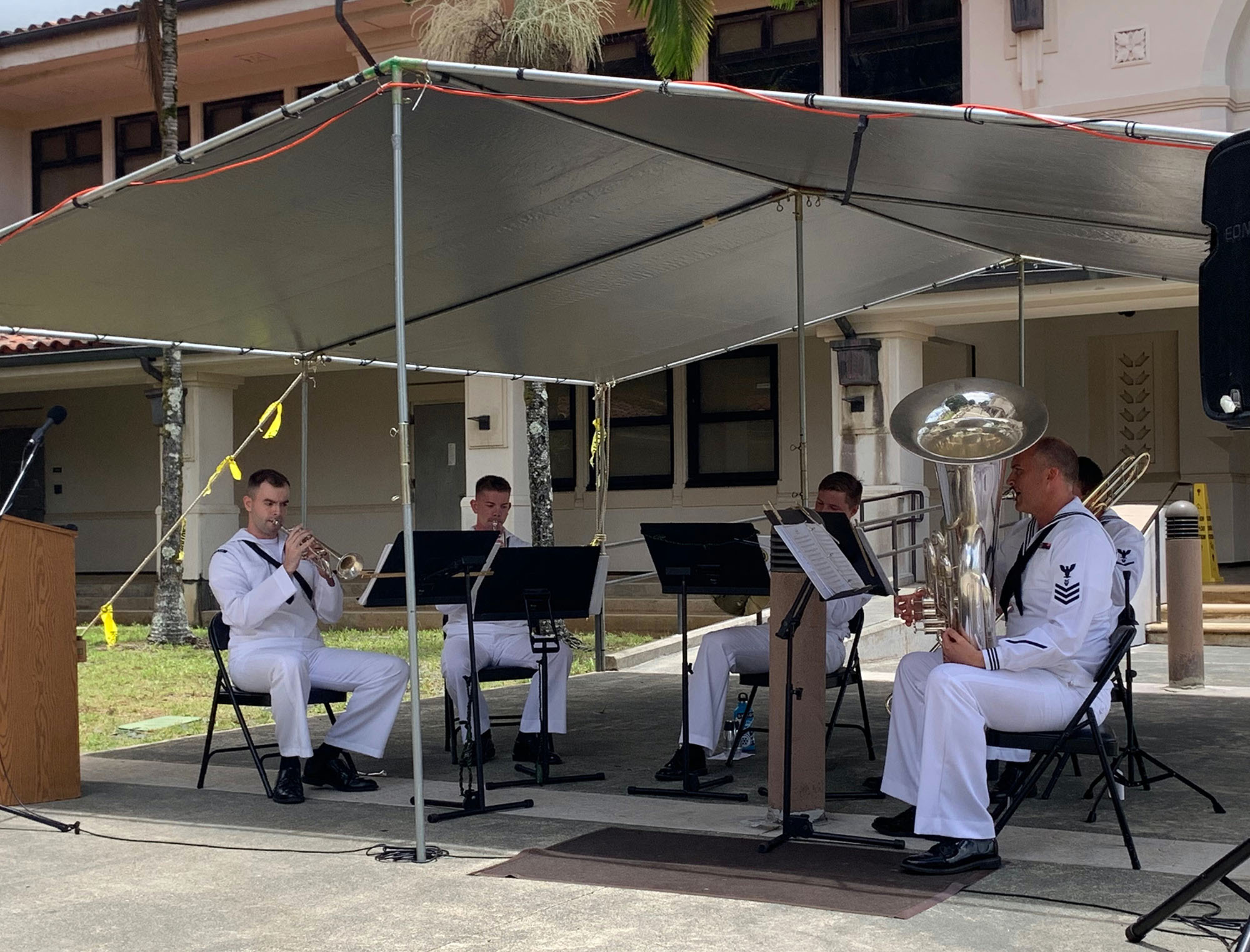
Stomp Rockets
Windward Community College's Project Imua team staffed a hands-on activity table where Spacefest participants could build and launch STOMP ROCKETS. After constructing and decorating their hollow paper tube rocket, each participant inserted the rocket onto a PVC launch rail and launched it by stomping on a plastic drinking bottle.





